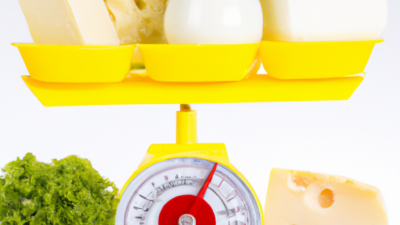**The Viability of Saving Commodity Money for the Future: An In-Depth Analysis**
In a world where digital transactions and fiat currencies dominate the financial landscape, the concept of commodity money might seem like a relic from a bygone era. However, the question of whether commodity money can be effectively saved for future use remains a topic of considerable interest and debate. Commodity money, which derives its value from the intrinsic worth of the material it is made of—such as gold, silver, or other precious metals—has a storied history as a medium of exchange, a store of value, and a unit of account.
This article delves into the practicalities and implications of saving commodity money for future purposes. We will explore historical precedents, evaluate the stability and security of different commodities, and consider the impact of modern economic dynamics on their viability as a long-term saving strategy. Additionally, we will examine the role of technological advancements and market fluctuations in shaping the future of commodity money. Whether you are a seasoned investor, a financial historian, or simply curious about the evolution of money, this comprehensive analysis aims to provide valuable insights into the enduring relevance and potential challenges of saving commodity money for future generations.
Sure, here is a content outline for an article on the topic "Can Commodity Money Be Saved for Future":
“`html
<!DOCTYPE html>
<html lang="en">
<head>
<meta charset="UTF-8">
<meta name="viewport" content="width=device-width, initial-scale=1.0">
<title>Can Commodity Money Be Saved for Future</title>
</head>
<body>
<h1>Can Commodity Money Be Saved for Future</h1>
<h2>Introduction</h2>
<p>
Commodity money has been used for centuries as a medium of exchange, a store of value, and a unit of account. Unlike fiat money, which derives its value from government regulation or law, commodity money is based on the intrinsic value of the commodities themselves. This article explores whether commodity money can be effectively saved and preserved for future use.
</p>
<h2>Historical Context</h2>
<p>
Throughout history, various commodities have served as money, including gold, silver, and even grains. The stability and long-term value of these commodities have made them reliable stores of wealth. However, the transition to fiat money in the modern era has raised questions about the viability of commodity money as a long-term savings option.
</p>
<h2>Intrinsic Value and Preservation</h2>
<p>
One of the main advantages of commodity money is its intrinsic value. Unlike fiat money, which can be devalued by inflation or government policies, commodities like gold and silver retain their value over time. This makes them attractive options for long-term savings. However, the physical nature of commodity money brings challenges related to storage, security, and deterioration.
</p>
<h2>Storage and Security Issues</h2>
<p>
Saving commodity money for the future requires secure storage solutions. Precious metals like gold and silver can be vulnerable to theft, requiring robust security measures. Additionally, physical commodities need to be stored in conditions that prevent deterioration. For example, grains must be kept in dry, pest-free environments. These considerations can add significant costs and complexity to saving commodity money.
</p>
<h2>Liquidity and Market Risks</h2>
<p>
While commodity money can be a dependable store of value, its liquidity can vary. Selling commodities for cash can be more cumbersome than liquidating fiat money assets. The market value of commodities can also fluctuate, influenced by supply and demand dynamics, geopolitical events, and economic conditions. These factors can impact the effectiveness of commodity money as a long-term savings vehicle.
</p>
<h2>Modern Alternatives</h2>
<p>
In the modern financial landscape, there are alternatives that combine the benefits of commodity money with the convenience of modern financial systems. For instance, gold-backed digital currencies and exchange-traded funds (ETFs) allow individuals to invest in commodities without the need for physical storage. These options provide a bridge between traditional commodity money and contemporary financial instruments.
</p>
<h2>Conclusion</h2>
<p>
Commodity money can indeed be saved for the future, offering a stable store of value with intrinsic worth. However, practical challenges related to storage, security, and liquidity must be carefully managed. Modern financial products offer innovative solutions that retain the benefits of commodity money while mitigating some of its drawbacks. As such, individuals interested in saving commodity money for the future should consider a diversified approach that leverages both traditional commodities and modern financial instruments.
</p>
</body>
</html>
“`











